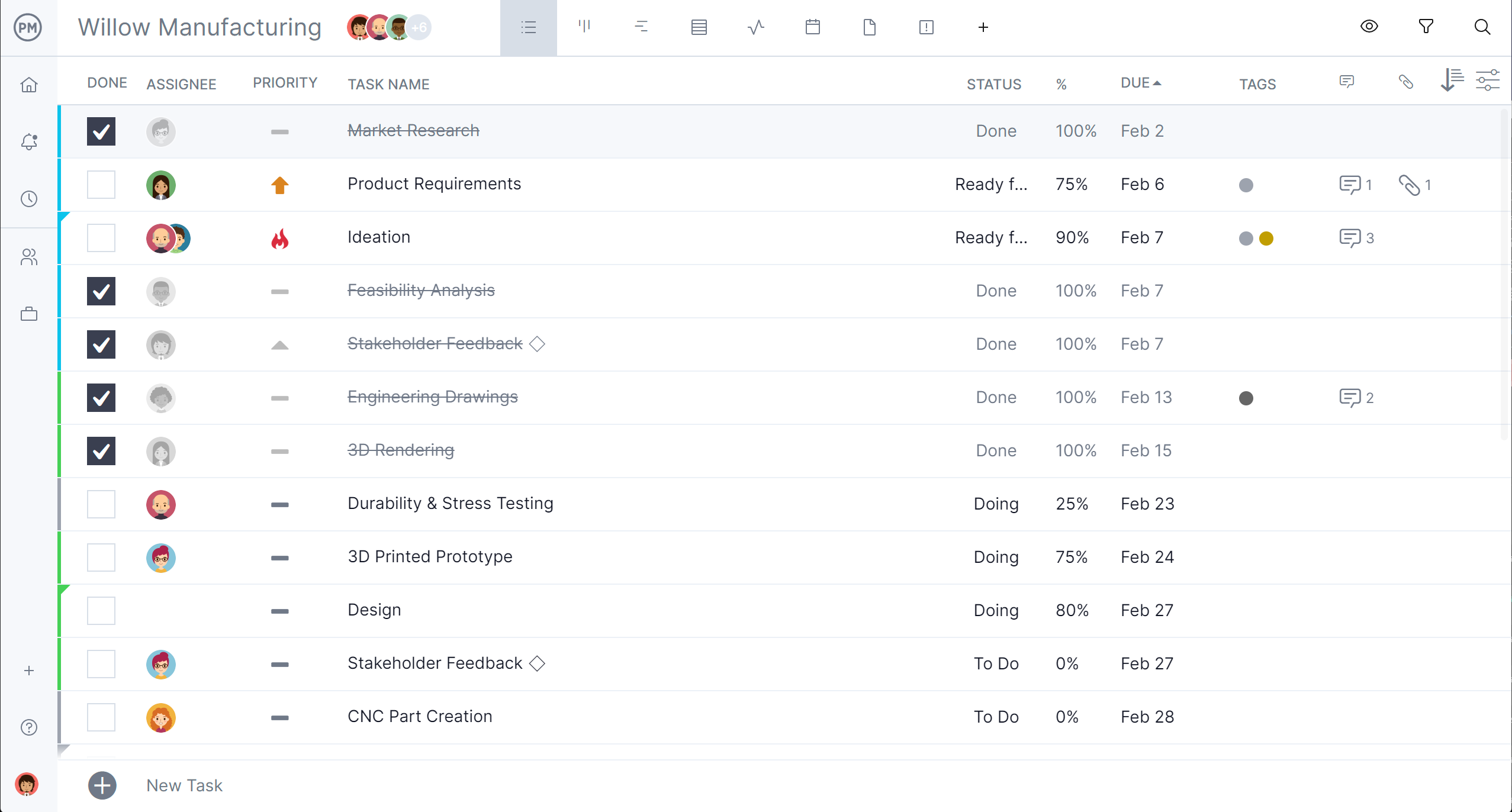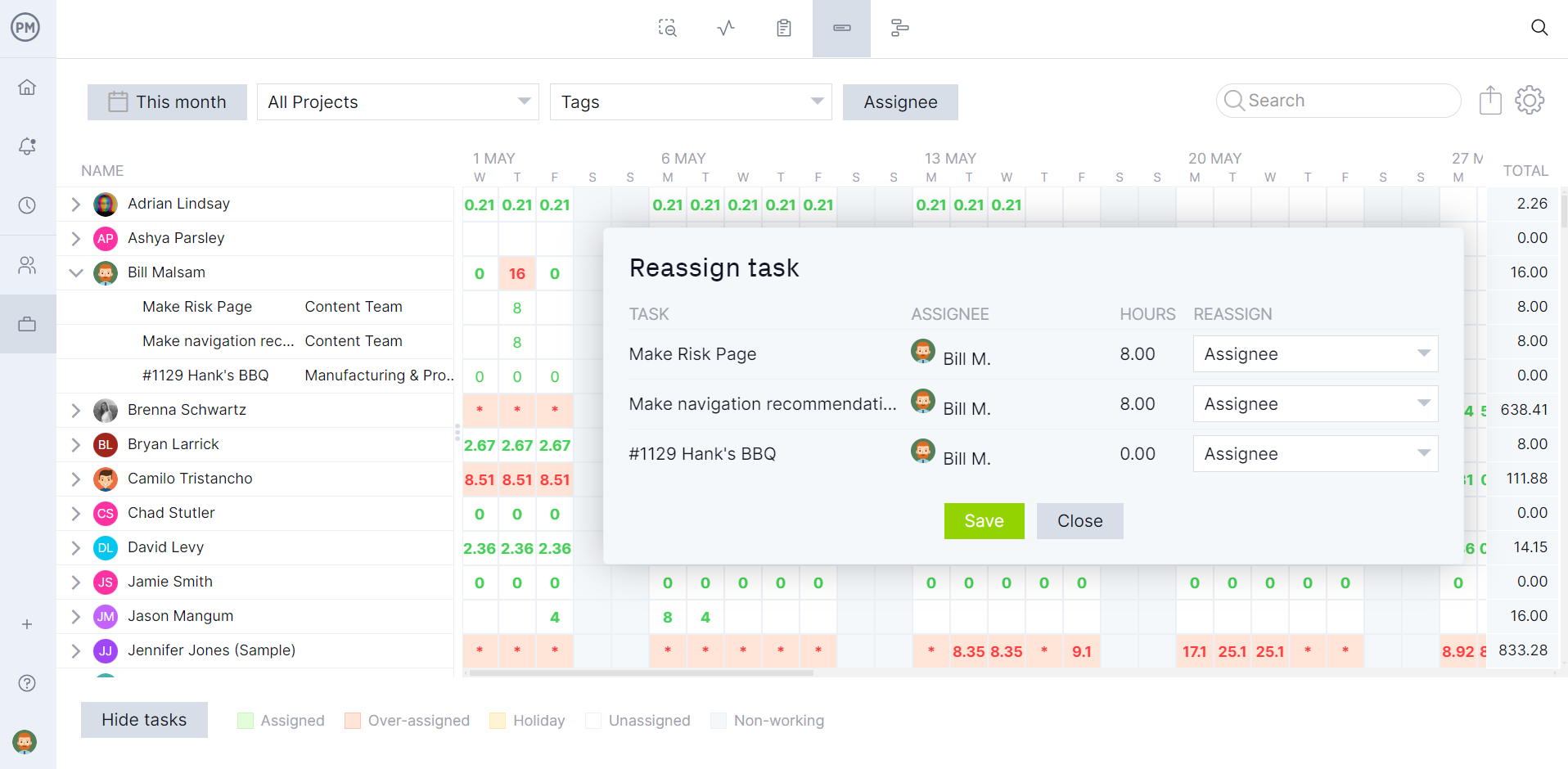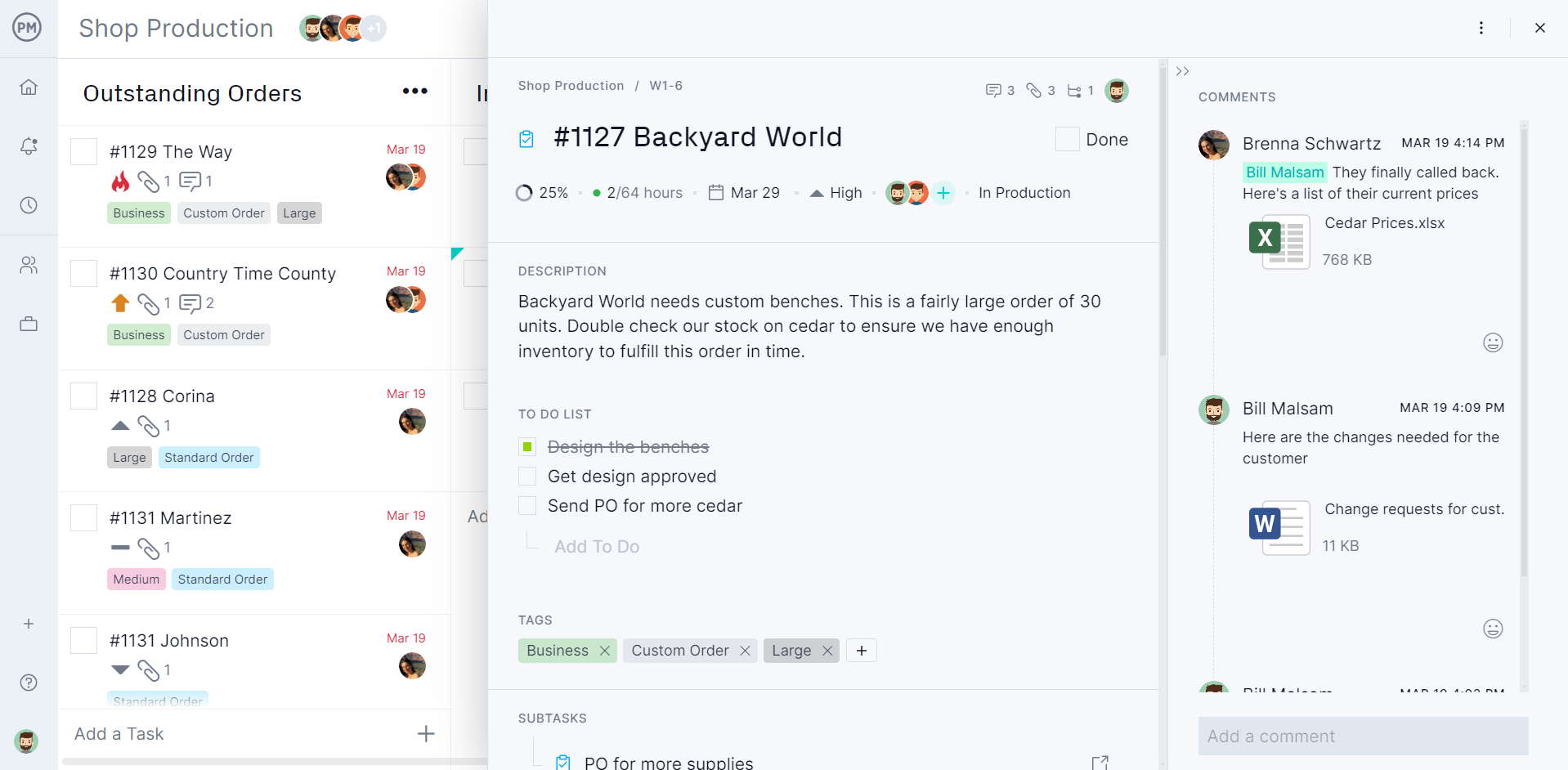Changes, whether personal or professional, are never easy to navigate. This is where a transition plan can help provide structure to the chaos. A transition plan is used in many industries. In project management, a transition plan can help a project move successfully from one phase to the next, onboarding a new team member or transferring one team member to a new position and/or department. A transition plan is an important document, but what is transition planning and how can you create a transition plan?
We’ll answer these questions and provide a transition plan example to illustrate a real-life scenario. There’s also a link to download a free transition plan template for Excel to help transition employees from one role to another. We will also outline the benefits of using a transition plan so that the next time there’s a transition in an organization, it will move forward smoothly and without incident.
What Is Transition Planning?
Before getting to the transition plan, let’s define transition planning. In general, transition planning is simply an action plan that helps people prepare for a transition into a new phase of life. As noted above, transition planning is used when an employee leaves, enters or changes their role in an organization. Transition planning can also help an organization transform into a more flexible, collaborative environment. For IT, transition planning can help move services from development into production.
What Is a Transition Plan?
A transition plan is a document that outlines the transition’s steps, goals and timeline. This strategic plan can help a project smoothly transition from implementation to maintenance within an organization. It’s also useful when moving a project team from a completed project to another project. The transition plan can save all the pertinent information and ensure it’s not lost as projects change or move forward.
Using a transition plan ensures a smooth transition by minimizing distributions and maintaining quality, efficiency and progress. Teams that use a transition plan will be able to proactively identify and address potential risks and uncertainties. But a transition plan is not solely a project management document, it is used across many industries and helps those involved understand their strengths and weaknesses, supports growth and success.
Put a Transition Plan Online With ProjectManager
The transition plan sets the stage, but project management software puts the plan into action. ProjectManager is award-winning project and portfolio management software that has robust Gantt charts that organize the steps in a transition plan.
- Link all four types of task dependencies to avoid cost overruns
- Filter for the critical path and identify essential tasks and slack
- Set a baseline to track progress, costs and resources in real time. Try it free.
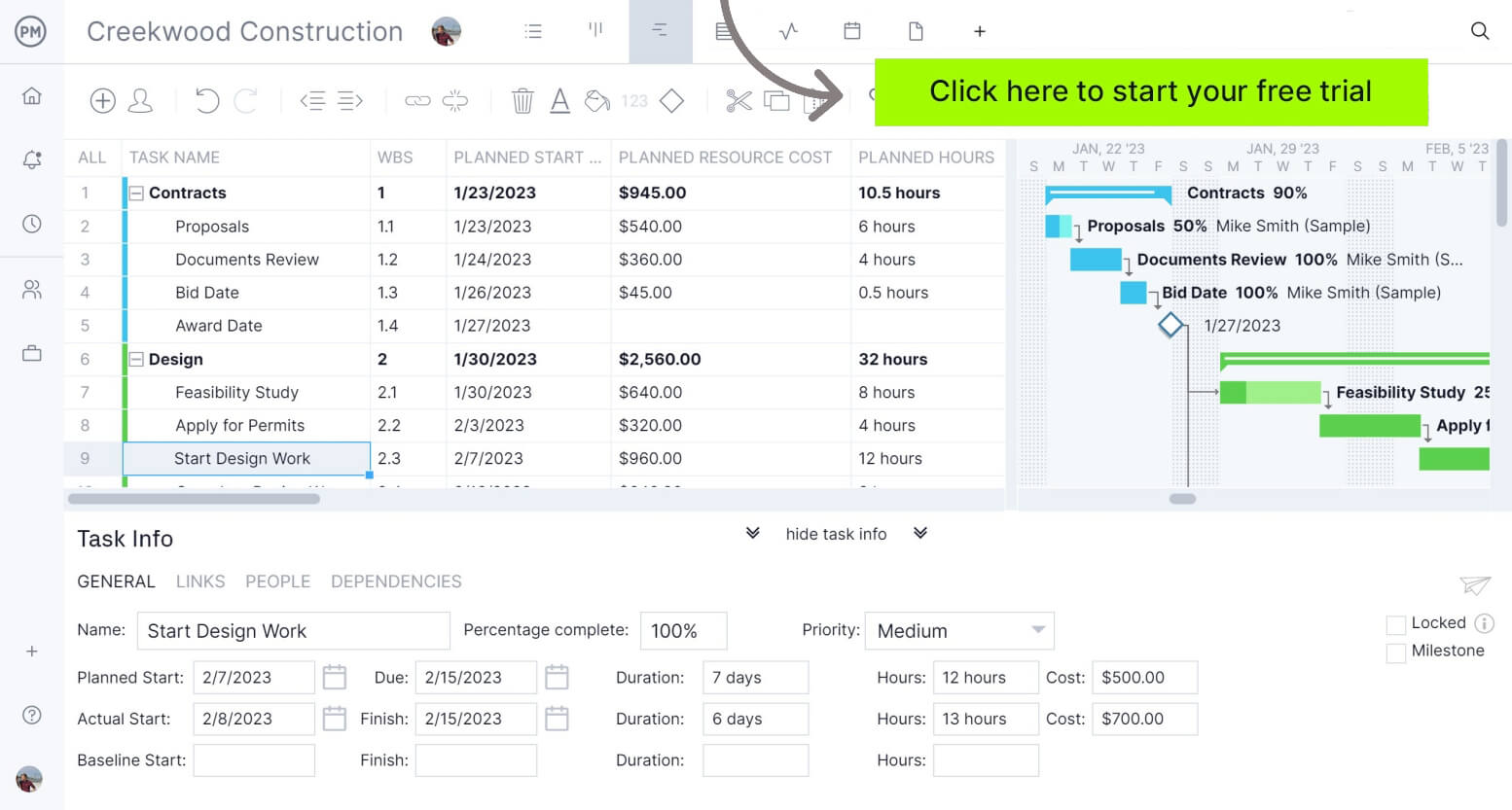
When Should Organizations Use a Transition Plan?
We’ve talked a little about how transition plans can help project management, organizational change management and employee turnover. Using a transition plan helps to ensure continuity and reduce disruptions that can get in the way of business workflows, projects and services. The transition plan provides a framework that creates knowledge sharing, mitigates risks and sets and achieves expectations. Here are three examples of when an organization should use a transition plan.
- Project Management: A transition plan can be used to document the steps and procedures for transitioning a completed project, such as guiding the handover of the project team to a new project or to those responsible for maintaining the project. It can also help with onboarding new team members or transitioning a team member to a new position.
- Organizational Change: When an organization wants to change its organizational structure, it’ll use a transition plan. For example, if they want to change from a traditional structure to a matrix structure, or maybe they want to simply add or remove a business department for which they’ll have to transfer people, a transition plan structures that change to ensure it happens without incident.
- Employee Turnover: Any business should have a transition plan ready to be used in case a key employee leaves, like a department manager or an executive. This helps the new person taking over that position understand what’s expected of them.
What Should Be Included in a Transition Plan?
Depending on the type of transition plan, the contents can vary. Let’s look at a specific employee transition plan, which would have the following information leading the document: the name of the employee transitioning to a new position, the date of that exit, who will succeed them, the current role, the new role, the current supervisor and the new supervisor as well as the old and new department, if applicable.
Next, there’s a section to collect accountability and expectations. This section communicates the goals and visions of the transition. It describes the role that the new employee will play in the daily operations of the organization. There’s also a section for knowledge transfer, which codifies the process of passing down organizational and technical knowledge from the person leaving the role to the one taking their place.
A role checklist captures all the tasks and details of that work so that the employee filling the role has a thorough understanding of what they’re expected to do. This handoff of responsibilities is a blueprint and a map for the person taking over the role to hit the ground running. Anything that didn’t make it into the above sections is collected in the additional plan information. At the bottom of the transition plan document are signature lines and dates for the people involved to sign.
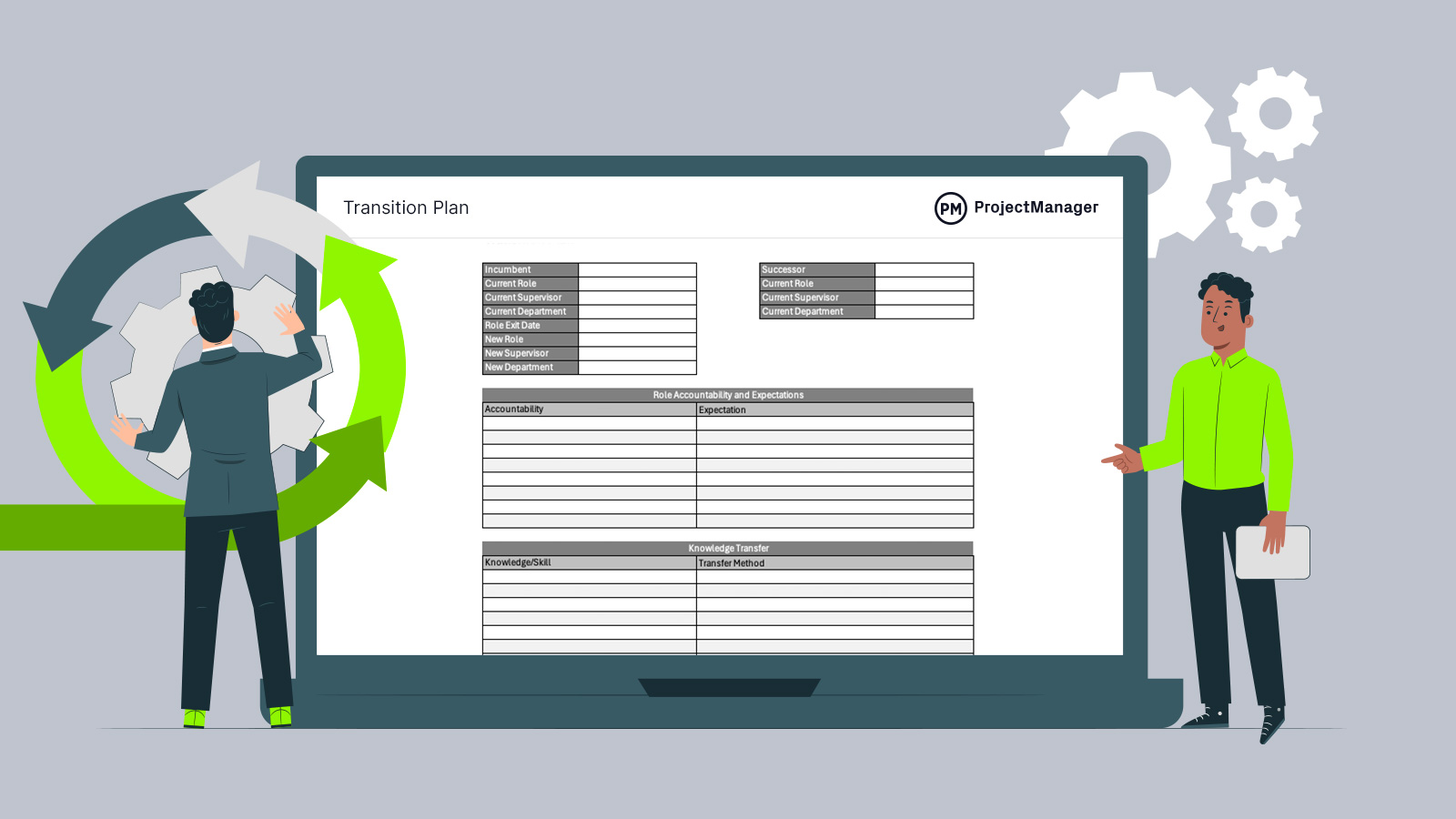
Get your free
Transition Plan Template
Use this free Transition Plan Template for Excel to manage your projects better.
How to Make a Transition Plan
To create a transition plan, start by defining the vision. Develop a clear idea for the future and make sure that it aligns with the values and strategic initiatives of the organization. If, for example, the transition plan is for a role change, then talking to the employee leaving the position is critical to understanding the information that needs to be transferred. Once this background is done, follow these five steps.
1. Estimate the Timeline of the Transition Period
Without a deadline, the transition could go on forever. While this is an exaggeration, creating a timeline will help make sure the transition is completed when it needs to be done without interrupting the project or operations. To make a timeline, all the tasks involved in a transition plan should have a start and end date. Estimating the duration of each task will help deliver the transition on time.
2. Define Goals and Make an Action Plan
To create a timeline, one must first have tasks and those tasks come from the steps that are taken to achieve a goal. Therefore, defining the goal of the transition is paramount. Once that has been completed, use a work breakdown structure (WBS) to identify the deliverables in the transition plan and, in so doing, the tasks and subtasks that will produce them. This is then the start of an action plan.
3. Identify a Successor
The roadmap is now coming together, but it needs a passenger to travel the route that has been created to transition from one role to another. That person is the successor or the employee who will take over the role of the incumbent. This employee must be chosen carefully to ensure that they have the right skills and experience to fulfill the mandate of the transition plan.
4. Make a Transition Document
With the information gathered above, the next step is to capture all in a transition plan document. This will guide the transition and ensure it is thorough and keeps to the transition plan.
5. Begin the Onboarding Process
At this point, the transition plan part of the process is complete. It’s time to onboard the employee in the new role. Throughout the execution of the transition plan, managers or supervisors should monitor its progress. By measuring key performance indicators (KPIs) throughout the onboarding process, managers can see if they’re on track to complete the transition plan. Be sure to make time for analysis and feedback, too.
Transition Plan Example
To better illustrate the process of a transition plan, let’s imagine an example and follow it through the process. In this case, we’ll look at Acme Manufacturing, which is placing an employee in its stock department. That person is succeeding a retiring employee. That retiring employee is interviewed to get a full picture of their role, accountability and expectation, any organizational and technical knowledge they have and a checklist of all their responsibilities.
The supervisor in charge of the transition makes a timeline in which the tasks needed to teach the new employee the ins and outs of the role are defined, with start dates and due dates. Those tasks are then assigned to the supervisor or possibly the retiring employee. This onboarding process can be done in person, online or a hybrid of both to facilitate collaboration.
The supervisor, while managing the onboarding process, also monitors KPIs to ensure that the work is being done by the transition plan. It all goes well, the retiring employee leaves on schedule and their successor is put in place with a full knowledge of their responsibilities.
Transition Plan Template
To ensure that the transition plan has not missed anything vital. Download this free transition plan template for Excel. It provides the structure to create a unique transition plan and helps to make sure that the transition is smooth and without incident.
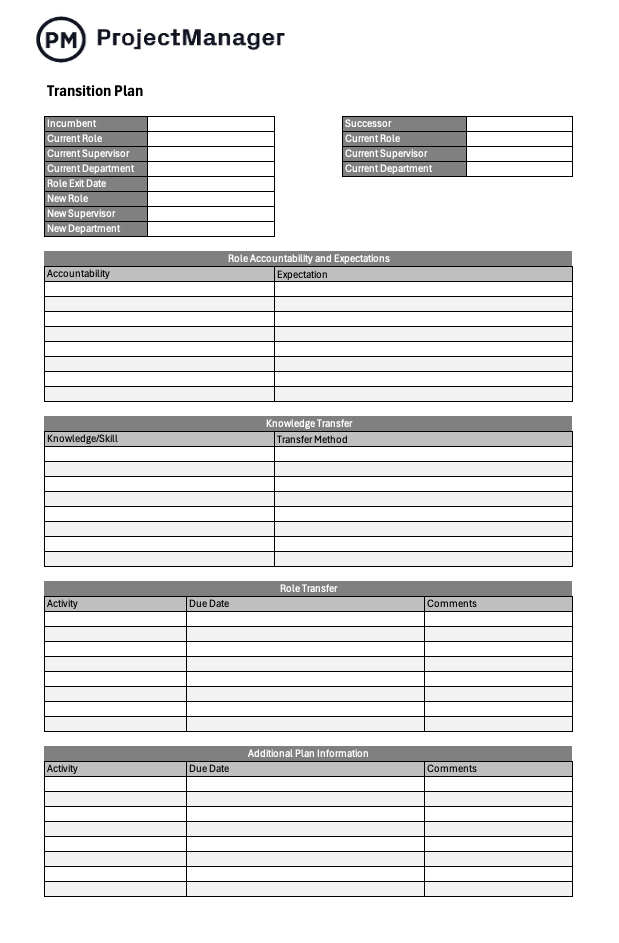
The free transition plan template is a framework that captures all the components of a successful transition. It can be used in project management for organizational change, onboarding team members or managing the transition from one project phase to another.
More Free Related Templates for Organizational Planning
For those not ready to upgrade to ProjectManager, we offer over 100 free project management templates for Excel and Word that cover all aspects of managing a project across multiple industries. Below are a few free templates that can be used in organizational planning.
Change Impact Assessment Template
Use this free change impact assessment template for Excel to help create a better transition plan. It will help users understand how the planned change will impact the organization, project and people involved.
Action Plan Template
One step in creating a transition plan is creating action steps. Use this free action plan template for Excel to break down the transition process into actionable steps, adding priority, assignments, status and more.
Implementation Plan Template
To gather all the tasks and resources needed for a transition plan and put them on a timeline use this free implementation plan template for Excel. It gives managers the framework they need to lead a successful transition.
Benefits of Making a Transition Plan
Using a transition plan has many benefits. It reduces the anxiety that accompanies any transition. Doing that will make the process move smoother. But a transition plan also can identify challenges, such as roadblocks before they become significant issues.
A transition plan also streamlines operations by ensuring the continuity of a position’s responsibilities and the security of its resources. Using a transition plan is also a way to prepare for the future. It allows for the practice of making decisions so those transitions are smooth and don’t disrupt work.
ProjectManager Helps Organizations Execute Plans
A transition plan is a plan like many others used in project management. Once the transition plan has been made, the execution phase follows. This is when a static template isn’t going to cut it and users will want to switch over to project management software. ProjectManager is award-winning project and portfolio management software that helps managers and their teams execute transition plans.
Multiple Project Planning Views
While Gantt charts are ideal for organizing tasks, linking dependencies and setting a baseline to track progress, other team members might not use Gantt charts. That’s why ProjectManager has multiple project views, such as the visual workflow kanban boards, task lists and calendar views. This allows the people involved in the transition plan to use the tools they’re most familiar and comfortable with.

Robust Resource Management Features
Managing the resources required to smoothly execute the transition plan is a key part of executing plans. Our resource management features begin with onboarding, where the availability of resources can be set, such as PTO, vacation and global holidays, which makes it easier to assign tasks. Using the team page or color-coded workload chart balances team workload to keep everyone working at capacity.

Online Team Collaboration Platform
Not all teams share an office, but with our collaborative platform, they can collaborate on the transition plan no matter where they are or when they work. Our unlimited file storage means the software is a hub to easily find all project documentation without having to sift through emails. Files can be shared, teams can comment at the task level and stay updated on changes and progress with email and in-app alerts.

Related Organizational Planning Content
A transition plan is one part of the larger organizational planning process. For those looking to learn more about this, below are some links to recent posts on the topic.
- How to Lead a Business Transformation
- How to Conduct a Change Readiness Assessment (Template Included)
- Employee Turnover Planning: A Quick Guide
- What Is an Implementation Plan? (Template & Example Included)
ProjectManager is online project and portfolio management software that connects teams whether they’re in the office or out in the field. They can share files, comment at the task level and stay up to date with email and in-app notifications. Join teams at Avis, Nestle and Siemens who use our software to deliver successful projects. Get started with ProjectManager today for free.

